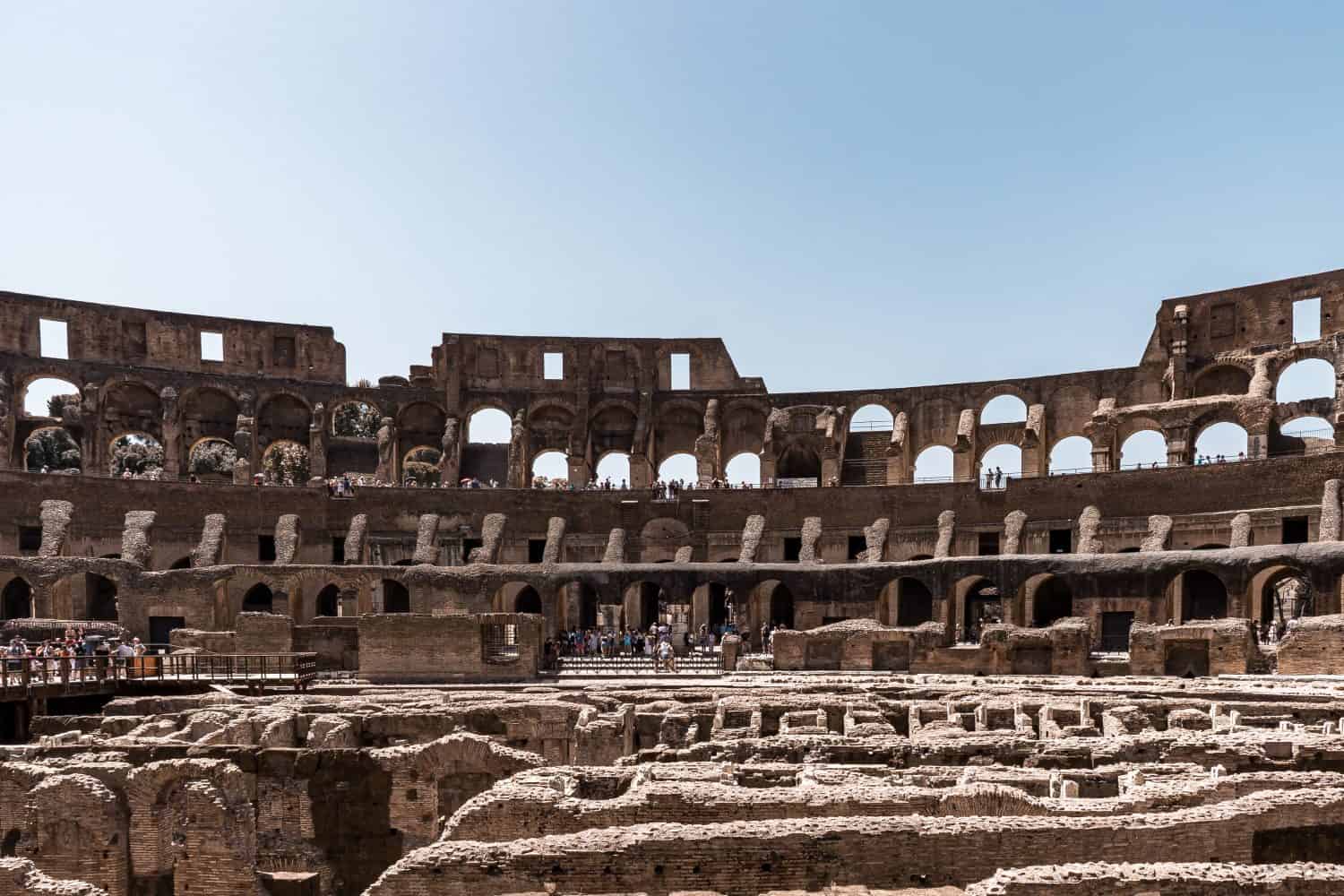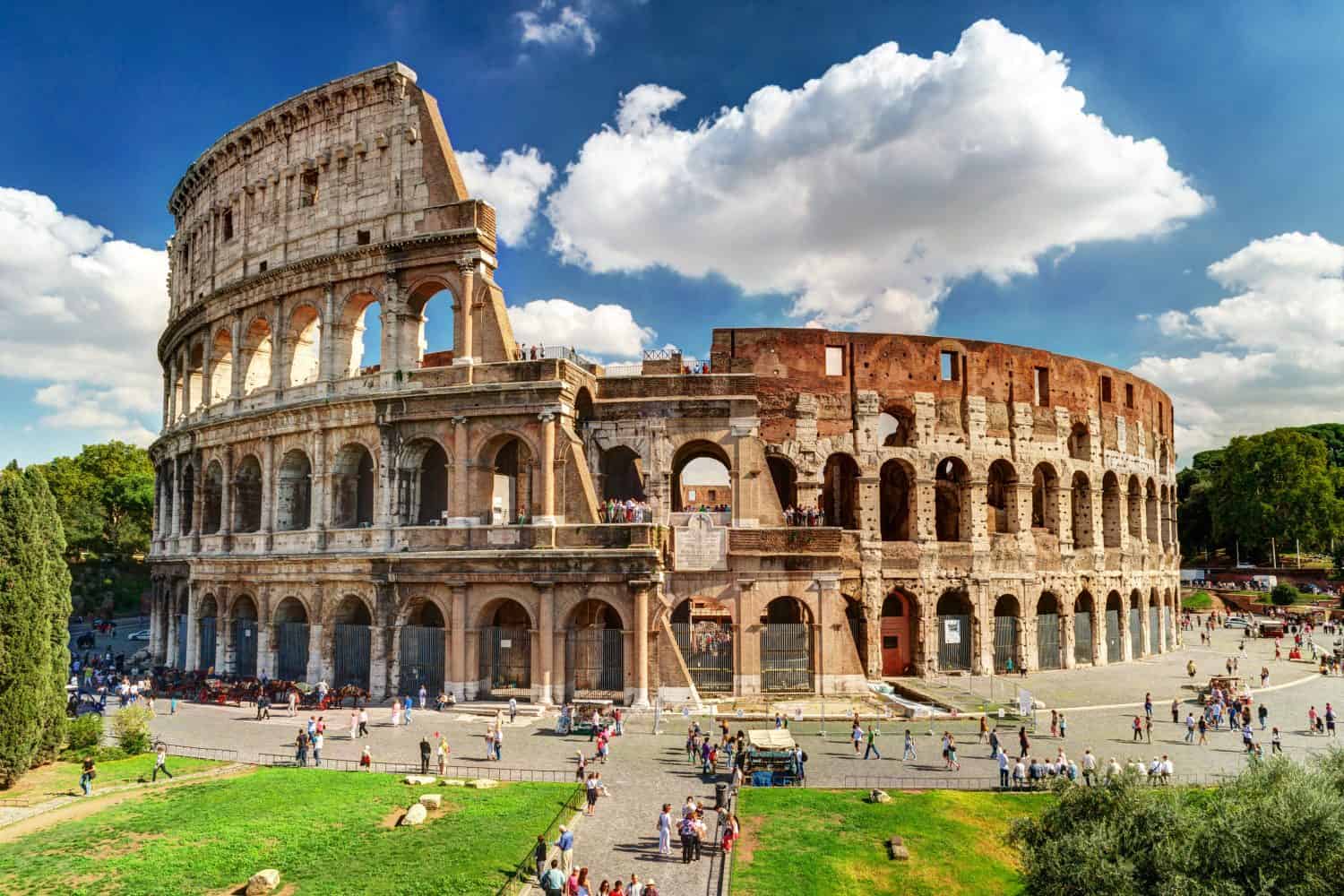As one of the most prominent monuments in Italy, the Colosseum is set at the center of Rome. Built as a gift to the city’s people, it remains the largest amphitheater still standing or ever built. In its heyday, the Colisseum was 620 x 513 feet, standing four stories high. Originally, this building only went by the name “amphitheater,” though historians began to call it the Flavian Amphitheatre later. But why was it built in the first place? Who wanted it to be in Rome, and how did they construct such a substantially large theater?
Who Built The Colosseum And Why?

Emporer Vespasian ruled from 69 to 79 AD, placing great importance on the restorage and unity of Rome.
©Gilmanshin/Shutterstock.com
While the exact date that construction began on the Colosseum is unknown, historians believe it happened between C.E. 70 and 72. Orders to build the Colosseum came from Emperor Vespasian, aiming to restore the city after the Civil War. He wanted a place for people to be entertained, centering it in the city. This placement was symbolic of the new inclusiveness of the Roman people, showing both prosperity and power that were synonymous with the Roman Empire.
The Colosseum took nearly 10 years to build. In the years that followed closely after, additional changes were made to further improve the theater space.
How The Colosseum Was Built

While the construction of the Colosseum took 8 years, it accommodated up to 50,000 spectators by its completion.
©Renata Ty/Shutterstock.com
The only way to construct the Colosseum was with precise planning, primarily due to the location of Nero’s manmade lake. To properly support the structure, workers had to start by removing the water with drains. They also used circular foundations near the outer walls and inner ellipse For stability and height. Before any construction started, the newly established ground level was 23 feet higher.
Using relics of the Jewish temple as the main source of funding, construction started in 72 AD. While Romans worked in specialized jobs during the construction, they used 12,000 prisoners from the Siege of Jerusalem to establish a slave workforce. The conditions were brutal, and prisoners were expected to endure long hours. Their work included a 1,885-Roman-foot perimeter for 80 arches supporting this free-standing structure.
Other Roman theaters of the time used hillsides as their support, but the Colosseum based its architecture on two theaters together. They also set their entire travertine stone wall with iron clamps and no mortar. Despite the minimal equipment available, construction ended within eight years of beginning. With over 50,000 spaces for spectators, Unfortunately, the emperor did not live long enough to see the fruits of his labor.
Celebrating the Colosseum’s Completion

The construction of the Colosseum didn’t end until after Emporer Vespasian’s death.
©pedro emanuel pereira/Shutterstock.com
To celebrate the completion of the, the successor to the throne – Emperor Titus – hosted a long inaugural event. During this event, the emperor decided to host 100 days of gladiatorial games, reenactments, and animal fights. At the time, construction was mostly complete. However, when Emperor Domitian took over as Titus’ successor, he installed underground tunnels. Used primarily by animals or human slaves, Domitian also included a new gallery to expand the Colosseum’s seating capacity.
The reason the Colosseum became so important is because of the entertainment that it provided. Games of battling gladiators were only one of the many events potentially held here. Emperors who hosted these events through the years brought dramatic plays, animal hunts, and even public executions. According to historical records, Emperor Commodus even took his turn performing at the arena during his rule from 177 to 192.
What Happened To The Colosseum?

The restoration of the Colosseum in the 21st century has included multiple conservators, designers, engineers, and archaeologists.
©Viacheslav Lopatin/Shutterstock.com
As the excitement over these violent events subsided, Romans became less interested in attending. The western Roman Empire fell, and the focus on the Colosseum waned as well. During the 5th century, the structure endured several earthquakes, but the majority of its deterioration was the result of neglect. Still, the artistry and attention to detail used to construct it in the first place made it possible for two-thirds of the original structure to stand today.
Towards the end of the 20th century, new restoration began, making it possible for anyone to visit and see a piece of Rome’s history. The only reason that the Colosseum still stands is because of this precise planning. No other structure has dared to reach such extensive heights, and the lesser structures continue to fall victim to the passing of time.
The photo featured at the top of this post is © Nicola Forenza/Shutterstock.com
Thank you for reading! Have some feedback for us? Contact the AZ Animals editorial team.







